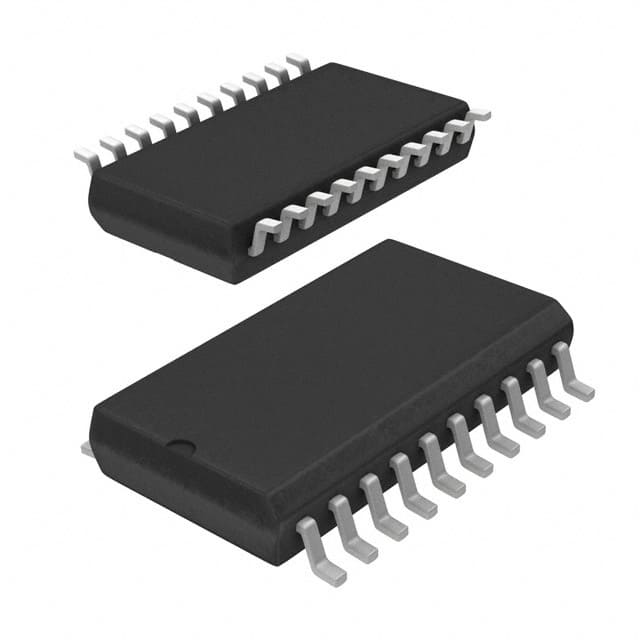Xem thông số kỹ thuật để biết chi tiết sản phẩm.

Encyclopedia Entry: 74ABT2244CSJ
Product Overview
Category
The 74ABT2244CSJ belongs to the category of integrated circuits (ICs) and specifically falls under the family of ABT series ICs.
Use
This IC is commonly used in digital electronic systems for signal amplification, buffering, and level shifting purposes. It is designed to provide high-speed, low-power operation, making it suitable for various applications.
Characteristics
- High-speed operation: The 74ABT2244CSJ offers fast switching times, enabling efficient data transmission.
- Low power consumption: This IC is designed to minimize power consumption, making it energy-efficient.
- Wide voltage range: It can operate within a wide voltage range, allowing compatibility with different systems.
- High noise immunity: The IC provides excellent noise immunity, ensuring reliable signal transmission even in noisy environments.
Package and Quantity
The 74ABT2244CSJ is available in a small outline integrated circuit (SOIC) package. Each package contains one IC.
Specifications
- Supply Voltage Range: 4.5V to 5.5V
- Input Voltage Range: 0V to VCC
- Output Voltage Range: 0V to VCC
- Operating Temperature Range: -40°C to +85°C
- Maximum Propagation Delay: 6 ns
- Maximum Operating Frequency: 200 MHz
Pin Configuration
The 74ABT2244CSJ has a total of 20 pins, which are assigned specific functions as follows:
- OE1 (Output Enable 1)
- A1 (Input/Output A1)
- I/O1A (Input/Output 1A)
- GND (Ground)
- I/O1B (Input/Output 1B)
- A2 (Input/Output A2)
- I/O2A (Input/Output 2A)
- VCC (Supply Voltage)
- I/O2B (Input/Output 2B)
- B1 (Input/Output B1)
- GND (Ground)
- B2 (Input/Output B2)
- I/O3B (Input/Output 3B)
- A3 (Input/Output A3)
- I/O3A (Input/Output 3A)
- GND (Ground)
- I/O4B (Input/Output 4B)
- OE2 (Output Enable 2)
- I/O4A (Input/Output 4A)
- VCC (Supply Voltage)
Functional Features
- Bidirectional Buffering: The IC provides bidirectional buffering, allowing data to be transmitted in both directions.
- Output Enable Control: The output enable pins (OE1 and OE2) allow the user to control the output state of the IC.
- High-Speed Operation: With a maximum operating frequency of 200 MHz, the IC ensures fast data transmission.
- Noise Immunity: The IC's design includes measures to minimize the impact of noise on signal integrity.
Advantages
- Fast switching times enable efficient data transmission.
- Low power consumption makes it energy-efficient.
- Wide voltage range allows compatibility with various systems.
- Excellent noise immunity ensures reliable signal transmission.
Disadvantages
- Limited number of input/output channels compared to some other ICs.
- May require additional external components for certain applications.
Working Principles
The 74ABT2244CSJ operates based on the principles of digital logic. It uses transistors and other electronic components to amplify and buffer digital signals. The IC's internal circuitry enables bidirectional data flow while maintaining signal integrity and minimizing power consumption.
Application Field Plans
The 74ABT2244CSJ finds applications in various digital electronic systems, including: - Microprocessor-based systems - Data communication systems - Memory interfaces - Industrial automation systems - Consumer electronics
Alternative Models
- 74ACT2244: Similar functionality with slightly different electrical characteristics.
- 74HC2244: Lower power consumption but operates at a lower maximum frequency.
- 74LS2244: Slower switching times but compatible with a wider voltage range.
These alternative models can be considered based on specific application requirements and system constraints.
In conclusion, the 74ABT2244CSJ is a high-speed, low-power integrated circuit commonly used for signal amplification and buffering in digital electronic systems. Its wide voltage range, noise immunity, and bidirectional functionality make it suitable for various applications across different industries.
Word Count: 560
Liệt kê 10 câu hỏi và câu trả lời thường gặp liên quan đến ứng dụng 74ABT2244CSJ trong giải pháp kỹ thuật
Sure! Here are 10 common questions and answers related to the application of 74ABT2244CSJ in technical solutions:
Q: What is the 74ABT2244CSJ? A: The 74ABT2244CSJ is a type of octal buffer/line driver integrated circuit (IC) that can be used in various digital applications.
Q: What is the purpose of the 74ABT2244CSJ? A: The purpose of this IC is to provide buffering and line driving capabilities for digital signals, allowing for signal amplification and isolation.
Q: What voltage levels does the 74ABT2244CSJ support? A: The 74ABT2244CSJ supports a wide range of voltage levels, typically between 4.5V and 5.5V.
Q: How many channels does the 74ABT2244CSJ have? A: The 74ABT2244CSJ has 8 channels, making it suitable for applications requiring multiple signal lines.
Q: Can the 74ABT2244CSJ handle bidirectional data flow? A: Yes, the 74ABT2244CSJ supports bidirectional data flow, allowing for both input and output operations.
Q: What is the maximum data transfer rate supported by the 74ABT2244CSJ? A: The 74ABT2244CSJ can handle high-speed data transfers up to several hundred megabits per second.
Q: Does the 74ABT2244CSJ have any built-in protection features? A: Yes, the 74ABT2244CSJ includes built-in ESD protection to safeguard against electrostatic discharge.
Q: Can the 74ABT2244CSJ be cascaded with other ICs? A: Yes, multiple 74ABT2244CSJ ICs can be cascaded together to increase the number of channels or drive capability.
Q: What is the power supply requirement for the 74ABT2244CSJ? A: The 74ABT2244CSJ typically operates on a single power supply voltage of 5V.
Q: What are some typical applications of the 74ABT2244CSJ? A: The 74ABT2244CSJ is commonly used in data communication systems, memory interfaces, bus drivers, and other digital logic applications.
Please note that these answers are general and may vary depending on specific datasheet specifications and application requirements.

